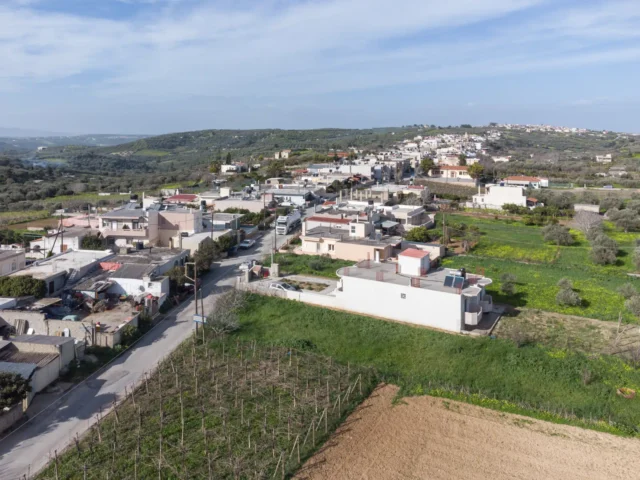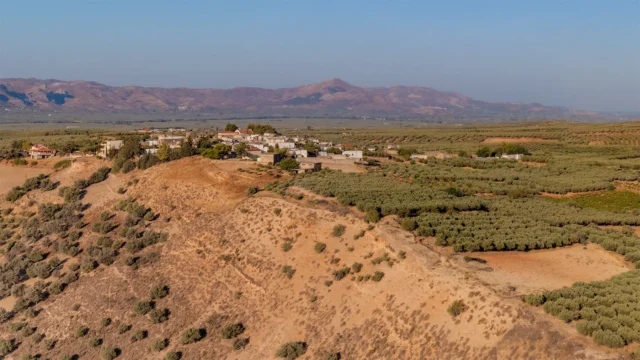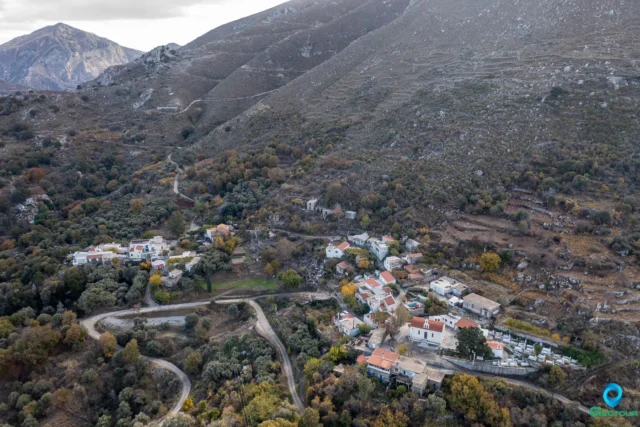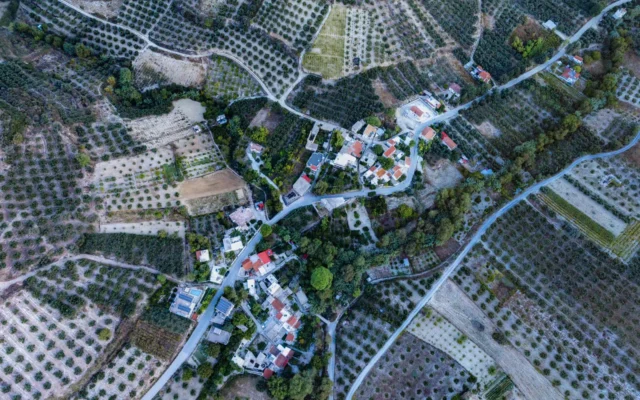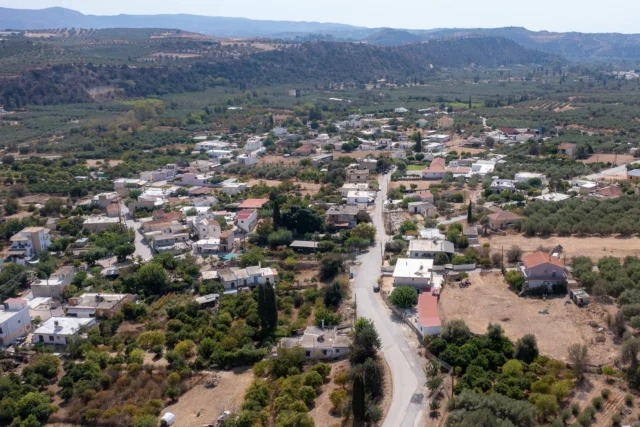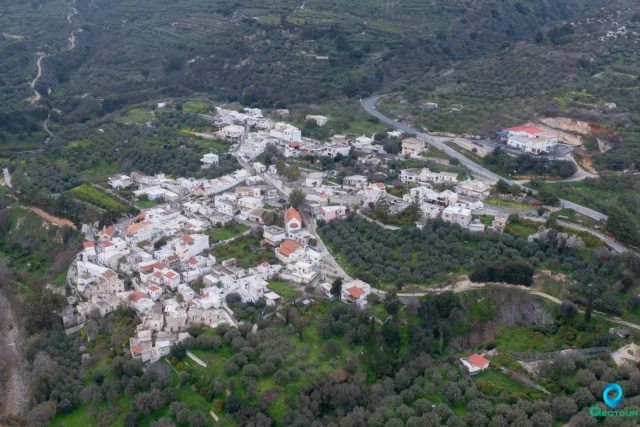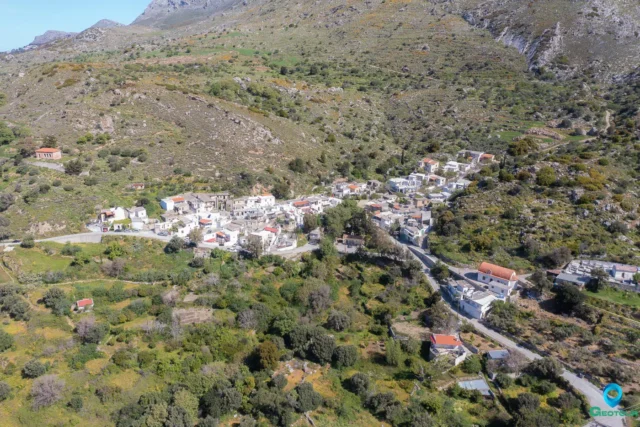829
listings found
Categories
Active filters:
Sgourokefali, Chersonissos
Sgourokefali is a settlement located in the Heraklion regional unit on the island of Crete, Greece. It belongs to the Municipality of Chersonissos
Agios Vassilios, Agios Vassilios
Agios Vassilios is a settlement located in the Rethymno regional unit on the island of Crete, Greece. It belongs to the Municipality of Agios Vassilios
Atsipades, Agios Vassilios
Atsipades, Rethymno, Crete, on Kouroupa peak, has Venetian origins. After 1770, Venetian converts to Islam became known for harshness, giving the village its "shameless" name; Janissary Arabis was notable. With 291 inhabitants in 1577, it later became predominantly Turkish (236 in 1881). Christians resettled post-1910. Population peaked at 207 (1940), then declined (27 in 2021). Landslides in 1978 caused relocations. Known for its religious, hardworking, musical residents and traditional family life.
Agios Syllas, Heraklion
Agios Syllas is a settlement located in the Heraklion regional unit on the island of Crete, Greece. It belongs to the Municipality of Heraklion
Kitharida, Malevizi
Kitharida is a settlement located in the Heraklion regional unit on the island of Crete, Greece. It belongs to the Municipality of Malevizi.
Faneromeni, Phaistos
Faneromeni is a settlement located in the Heraklion regional unit on the island of Crete, Greece. It belongs to the Municipality of Phaistos
Klima, Phaistos
Klima village, in Crete's Amari Valley, has a history dating back to the Venetian period. Located 70 kilometers from Heraklion, it was part of the Rethymno district during the Ottoman period and became part of the Heraklion prefecture after 1913. Agriculture is central to village life, with olive groves, vineyards, and sheep and goat herding.
The village has a rich cultural heritage, with a strong Cretan identity expressed through dialect, music, and dance. The "Kritikos" dance is popular at festivals and weddings. Religion is also important, with the Assumption of the Virgin Mary celebrated on August 15th.
Family and community are central to village life, with strong kinship ties and shared responsibility. Traditional gender roles are observed, but there is also a strong sense of community spirit, evident in the tradition of offering labor for communal projects.
Skopi, Siteia
Skopi, a village in Sitia, Lasithi, Eastern Crete, is known for an ancient olive press dating back to the Greek or Roman period. First officially mentioned in 1925, Skopi has a rich history. The village is the seat of the Skopi community, which includes Xerocampos, Panagia Faneromeni, Papadiokampos, and Sarantapechos. The population of Skopi is 524 (2021 census). The olive press, found in the "Proskefala" area, suggests olive oil production in the region during antiquity. The large stone base features a circular groove and tank. The dating of the olive press is debated, with some suggesting the Greek period and others the Roman period. Skopi is 7 kilometers from Sitia.
Maronia, Siteia
Maronia, a historic village in eastern Crete's Sitia municipality, boasts a rich past. Near the village are remains of a Minoan settlement and carved tombs. The village, mentioned in Venetian records as "Marunea" in 1583, is believed to be named after a settler from Thrace. Notable sites include the churches of Agia Triada and the Dormition of the Theotokos, the caves of Spiliara and Agionero, an Ottoman fountain, and a historic olive mill. Maronia is also the birthplace of Cretan revolutionary Captain Sifis Dermitzakis.
Patsos, Amari
Patsos is a settlement located in the Rethymno regional unit on the island of Crete, Greece. It belongs to the Municipality of Amari.
Vrysses, Agios Vassilios
Vrysses is a settlement located in the Rethymno regional unit on the island of Crete, Greece. It belongs to the Municipality of Agios Vassilios
Akoumia, Agios Vassilios
Akoumia is a settlement located in the Rethymno regional unit on the island of Crete, Greece. It belongs to the Municipality of Agios Vassilios
Platanes, Agios Vassilios
Located on the southern foothills of Mount Kentros in Rethymno, at an altitude of 537 meters. First documented in 16th-century Venetian censuses, the settlement features the 13th-century Church of the Holy Cross. The surrounding area is defined by Mount Kentros, part of the Natura 2000 network, and includes sites linked to the hero Digenis Akritas, like the Cave of Digenis (a former Minoan worship site) and the impressive Richtra of Digenis, a 70-meter waterfall within the Platanes gorge.
Kerames, Agios Vassilios
Kerames is a settlement located in the Rethymno regional unit on the island of Crete, Greece. It belongs to the Municipality of Agios Vassilios
Drimiskos, Agios Vassilios
Drimiskos is a settlement located in the Rethymno regional unit on the island of Crete, Greece. It belongs to the Municipality of Agios Vassilios
Myrsini, Siteia
Myrsini, a village in eastern Crete, near Sitia, has a rich history. Minoan tombs and artifacts have been found in the area, and the Venetian-era Kornaros Tower stands as a reminder of past rule. First mentioned as Metochia in the 1834 Egyptian census, the village later became known as Myrsini in 1920 due to its myrtle trees. The local economy relies on agriculture, primarily olive oil and grape production. The Tower of Kornaros, also known as the Tower of Agios Antonios, with an inscription "Vicenzo Cornaros 1677", is a medieval structure with a complex history, including partial destruction during the 1897 revolution and subsequent restoration.
Exo Mouliana, Siteia
Exo Mouliana, a historic village in Sitia, Crete, boasts Byzantine and Venetian heritage. Its name may derive from the Mouliani brothers or the verb "mullono." The village features the Byzantine church of Agios Georgios, Venetian buildings, and a Turkish fountain. Exo Mouliana is also a gateway to Richtis Gorge and its waterfalls. The village's economy centers on olive oil production. Population data spans from 1583 to 2021, reflecting its historical significance.










